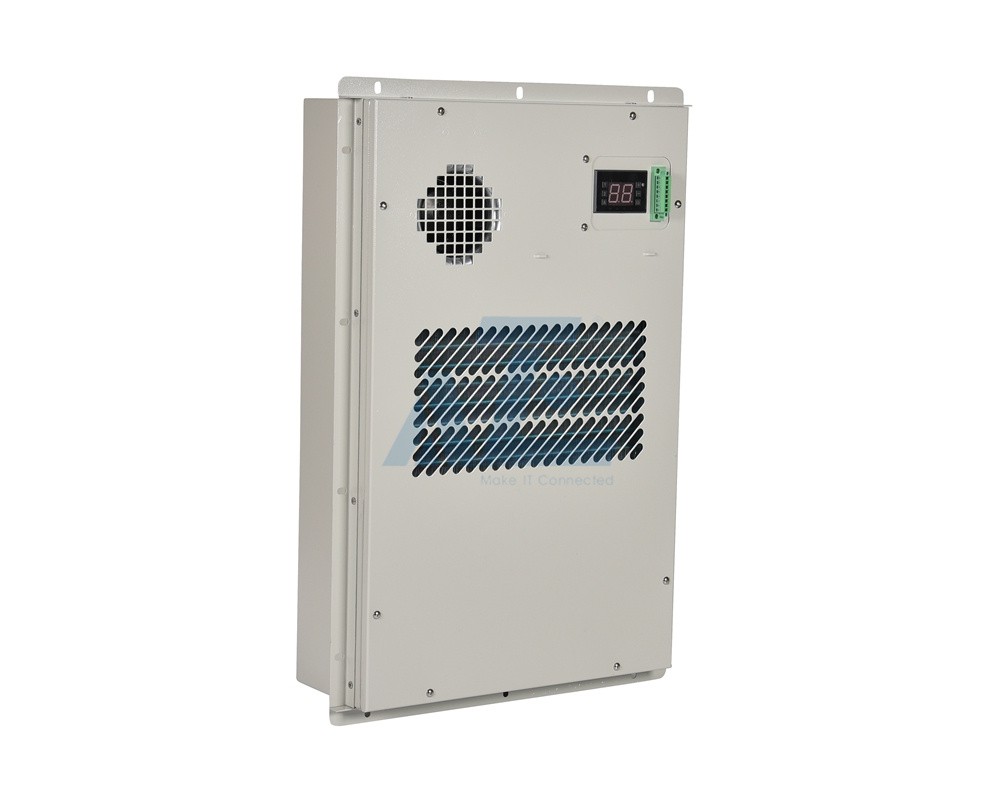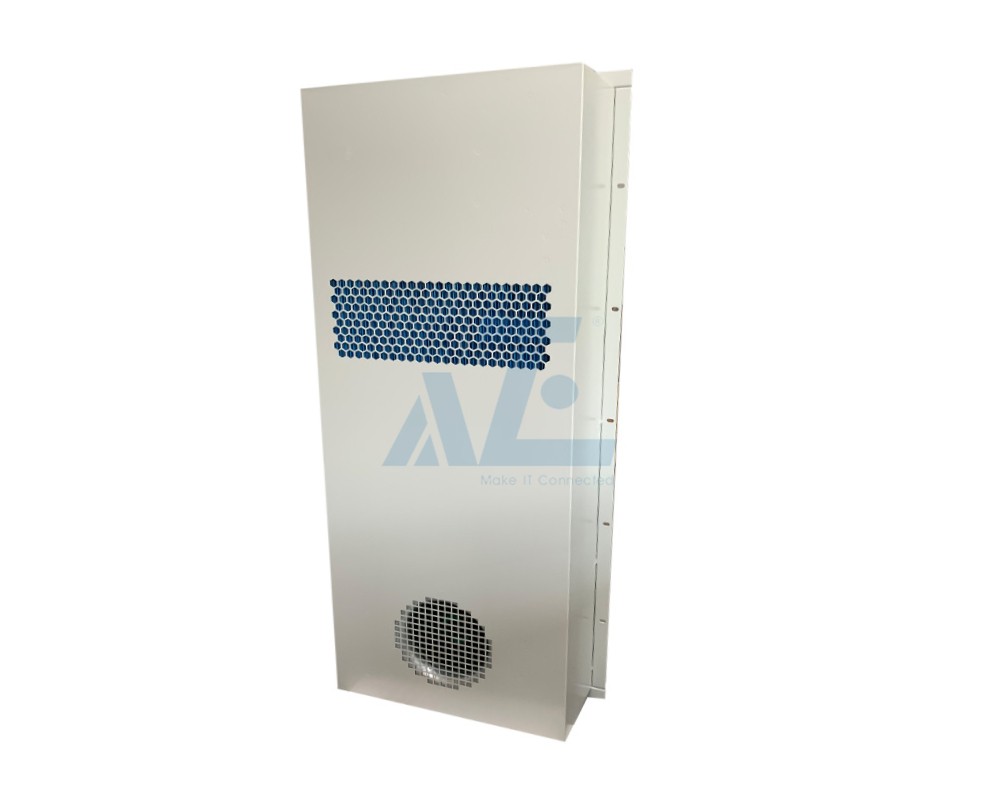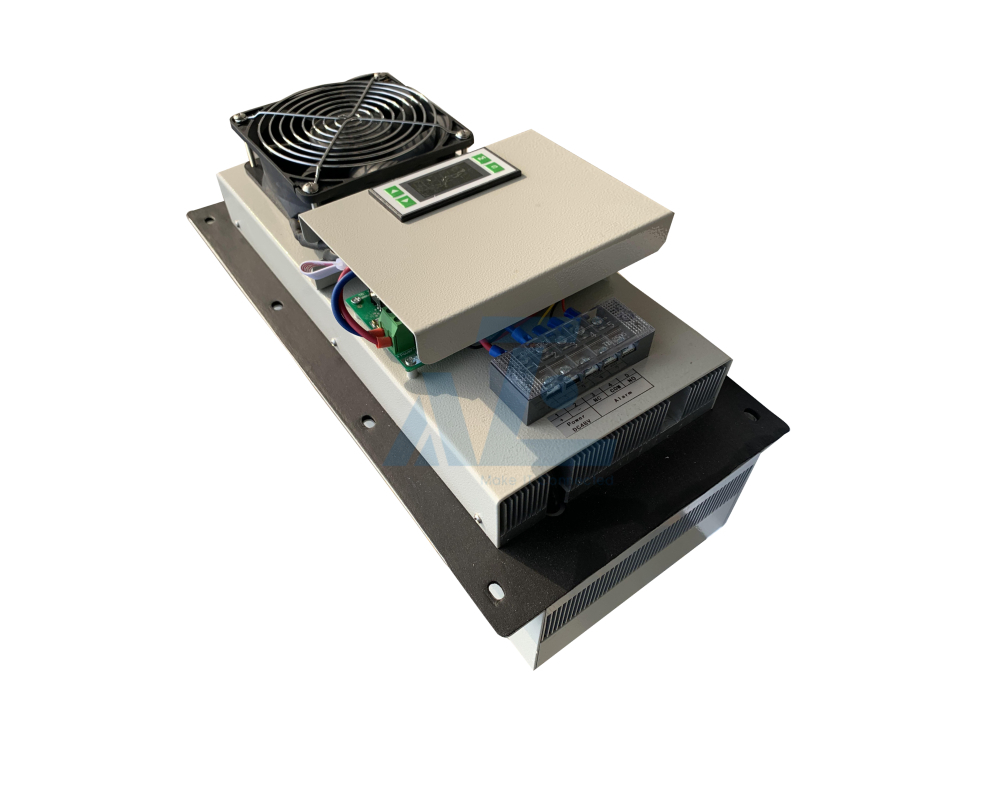Climate Control for Heating & Cooling your NEMA Enclosures
AZE offers a vast array of climate control options for adding increased air flow, cooling or heating to your enclosure, bringing extended reliability and performance to your equipment. With these small additions, efficiency thresholds of equipment improve as well as reducing downtime losses due to equipment failure.
Custom
Warranty
Certificates

5100btu outdoor cabinet Air Conditioner- 1500W Air Conditioner-AC powered
AC220V Powered | 1500W cabinet air conditioner
RODAC1500W-220V

Outdoor Cabinet Heat Exchanger 150W/K
150W/K Enclosure Heat Exchanger | DC48V Powered
RODHEX150W-48V

TEC Air Conditioner for outdoor enclosure cabinet- 200W Air Conditioner-DC powered
680BTU Cooling | DC48V TEC air conditioner for outdoor telecom enclosure
RODTEC200W-48V

5100btu telecom enclosure Air Conditioner- DC48V 1500W Air Conditioner
DC48V Powered | 1500W enclosure air conditioner
RODDC1500W-48V

Outdoor Battery Electrical Cabinet Heat Exchanger 260W/K
260W/K Enclosure Heat Exchanger | DC48V Powered
RODHEX260W-48V

Outdoor Cabinet Heat Exchanger 200W/K
200W/K Enclosure Heat Exchanger | DC48V Powered
RODHEX200W-48V

Outdoor Cabinet Heat Exchanger 100W/K
100W/K Enclosure Heat Exchanger | DC48V Powered
RODHEX100W-48V
Climate-controlled outdoor equipment cabinets play an important role in insuring reliable and quality communications links. Telecommunication equipment is very susceptible to high temperatures and high humidity. Overheating and condensation could shorten the life expectancies of your investment and cause major failures. For proper functioning, these electronics require an environment that is controlled for heat and humidity. Climate control for enclosures combats overheating and provides freezing protection, even in the harshest environments.
AZE provides a wide full range of temperature climate control products and solutions for Telecommunication,Industry Automation,Energy Storage and EV Transportation
- Cabinet air conditioner
- TEC air conditioner
- Heat exchanger
- AC or DC powered
- 100W,300W,500W,1000W,2000W,3000W,5000W
One of the biggest challenges of terminating your telecommunications equipment outdoors is finding outdoor enclosures that will be able to properly withstand the elements. Temperature, moisture, ice, shock hazards, and UV damage are all potential dangers to consider before purchasing an outdoor enclosure or cabinet. On top of all that, network hardware generates excess heat on its own, meaning you might need to consider a temperature solution that manages airflow with cooling technology.
At AZE,we offer a variety of outdoor enclosures for telecommunications equipment. If one of our standard products doesn’t quite meet your application requirements, we can modify the design to create the ideal outdoor product for your needs. We can also collaborate with you and your team to create new products built to your specifications. Before you purchase any telecommunications cabinet, consider the following:
- NEMA Ratings for Outdoor Enclosures
Finding outdoor enclosures that meet all of your application requirements is made simpler through NEMA ratings. Cabinets with a 3, 3R, 3S, 3X, 3RX, 3SX, 4, 4X, 6, or 6P NEMA standard or IP55, IP65 rating are all properly made to withstand the outdoor elements to varying degrees. The key is to select the enclosure rating that best meets your environmental needs, and then find an appropriate enclosure with that rating. American Products manufactures metal cabinets and enclosures that meet or are designed to NEMA type 3R, 4, and 6.
- Outdoor Enclosures Material
Our outdoor enclosures ranges from 6U to 42U, single bay outdoor cabinet, dual outdoor enclosures or triple outdoor telecom enclosures, the material can be Metal, Aluminum or Stainless Steel.
- Outdoor Environmental Factors
Additionally, to ensure the performance and reliability of your equipment and to give it the best chance at a long lifespan, you must consider outdoor environmental factors. These factors include variations in the internal operating temperature with temperature extremes, water, and dust ingress at cabling connections. Other dynamic factors include moisture, condensation, chemicals, and corrosive gases that can affect internal component and material selection. Don’t forget about the panel layout and design and the need for environmental conditioning (cooling and heating).
- External Features
Also, keep in mind that if you are going to connect external features, such as a cable or antenna, it may be necessary to modify your enclosure for the outdoors. Every cutout you add to the cabinet provides an opportunity for water or other contaminants to seep in. Using the right accessories, such as cable glands, can help seal out dust, dirt, and damaging liquids.
- Climate Control
For electronics to survive in an outdoor enclosure, they typically require climate control.
Whether you’re keeping your electronic systems and components cool in the summer or warm in the winter, outfitting your outdoor enclosures with the appropriate heating and cooling features will help protect your investment.
Does your enclosure need a cooling system? What about corrosion resistance or a water- and dust-tight seal? Determining which features are necessary will help you select the proper enclosure and material to protect your equipment against the elements.AZE has the cooling options can be fan units, heat exchanger, AC/DC air conditioners that provided to cool down your IT equipments that installed inside the cabinets.If you need the heating inside the outdoor enclosure, we also have the options of fan, heater or air conditioner to meet your requirements.
Before you choose the climate control options, you need to know what’s the operating temperature of your equipment and what do you want the climate to be in the cabinet?
If your equipment is hardened, i.e., robust and able to operate at higher temperatures, this isn’t going to be too much of an issue. We can help recommend the proper size of heat exchanger or fan for your heat level.
But if your equipment isn’t hardened, and the environment has the potential to get hot during the summer months, we might recommend an air conditioner and insulation to help keep the temperature inside at a tolerable level.
You should note that you can’t get a fan solution in a NEMA Type 4 cabinet, due to the opening that would allow hose-directed water ingress.
- Benefits of Heating and Cooling Your Enclosure
When you control the internal climate of your metal enclosures, you benefit from the following:
- Less dust and dirt get into climate-controlled enclosures compared with basic enclosures
- Extra protection from flooding and water exposure caused by humidity, rain, and melted snow
- Assurance that your electronics will be properly protected from overheating and freezing
- Minimal worry about pests, temperature damage, or corrosion
- Cost to properly store telecommunications equipment can be less than the cost to replace it
Climate control for enclosures often begins with insulation. At AZE, we recommend all enclosures with climate control be outfitted with insulation. Using insulation helps to control how much heat is allowed in and out of your enclosure. This makes your heater or air conditioner more efficient. Plus, it helps control humidity levels and moisture.
When designing your enclosure, you can choose from a variety of heating and cooling options, including natural convection, fans, air-to-air heat exchangers, air-to-water heat exchangers, and air conditioners. Each of these technologies offers its own unique style, advantages, and customization options.
- Outdoor Enclosure Heaters
Heaters stabilize the enclosure’s internal temperature compared with the outside environment’s temperature; thus, they either avoid condensation or achieve minimum temperatures for equipment. Heaters can be critical for protecting sensitive electronics, like fiber optics, from frost. Our heaters have built-in adjustable thermostats. We also have a Battery Heater Pad option that fits nicely on a battery tray.
- Exhaust Fan and Filters for Outdoor Electrical Enclosures
Exhaust fans dissipate heat from the enclosure and distribute heat evenly, avoiding condensation. This setup is typical in situations where there are no aggressive environmental conditions and no excessive dust in outdoor air. Our exhaust fans come with an adjustable thermostat and filters if requested.
Heat exchangers either dissipate heat from enclosures or cool enclosures to below outdoor temperatures. Thanks to two separate air circuits, no outdoor air is able to enter the enclosure. These units may be used in an environment contaminated with dust and aggressive conditions. Our exchangers come in a variety of sizes. Please contact us for more information.
- NEMA Type Outdoor Enclosure Air Conditioning and Cooling Units
Cooling units dissipate heat and cool enclosures to below the outdoor temperature. In this case, the ambient air is separated from the enclosure’s internal air. Some of our air conditioning units even come with a built-in heater, corrosion protection, and a cold-start heater.
You can compare these outdoor enclosures or contact us with any questions. Remember, our experts will work with you to select or design an outdoor electronics enclosure that meets your unique application’s requirements.
